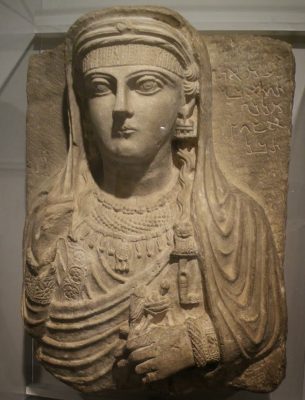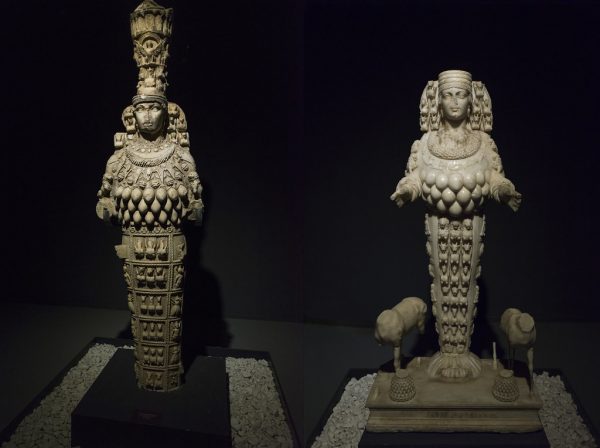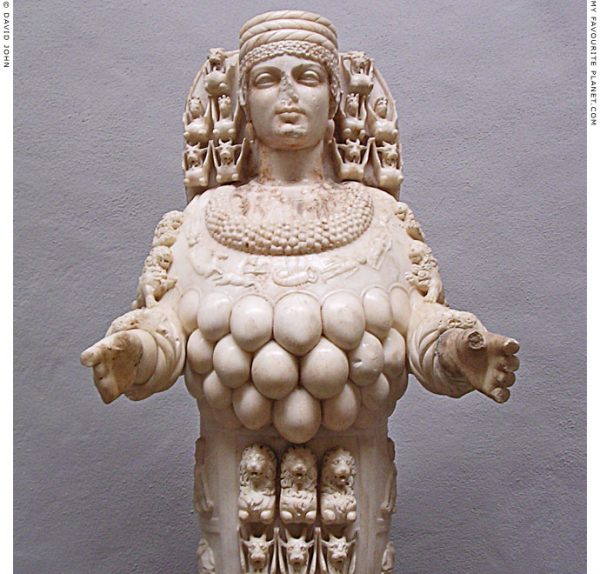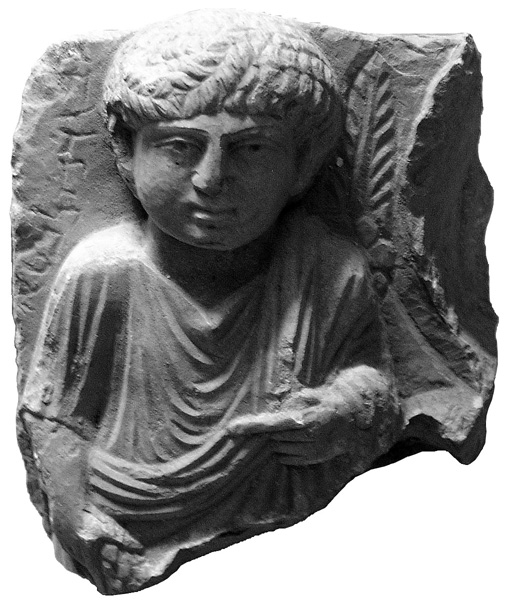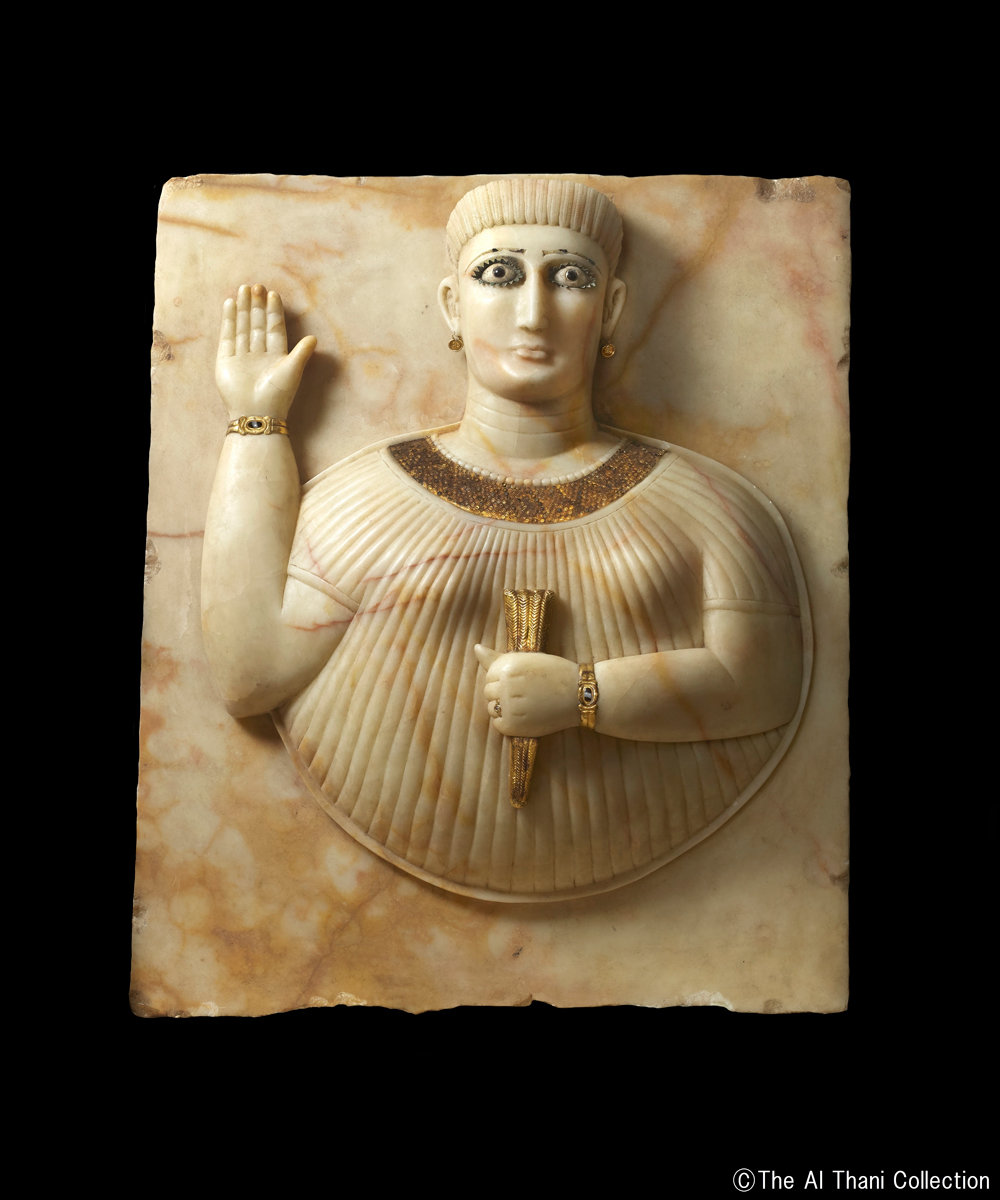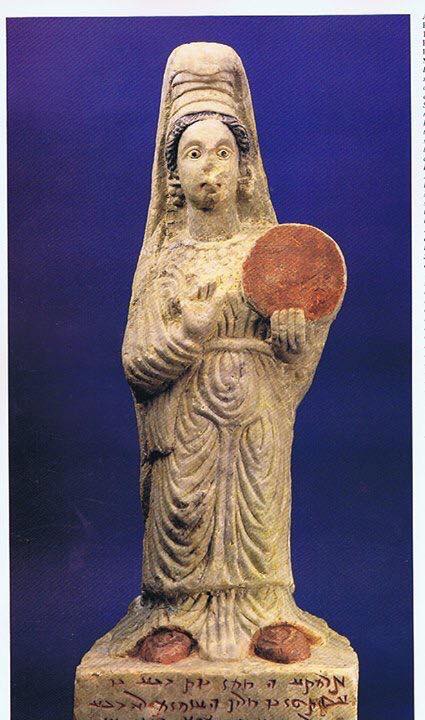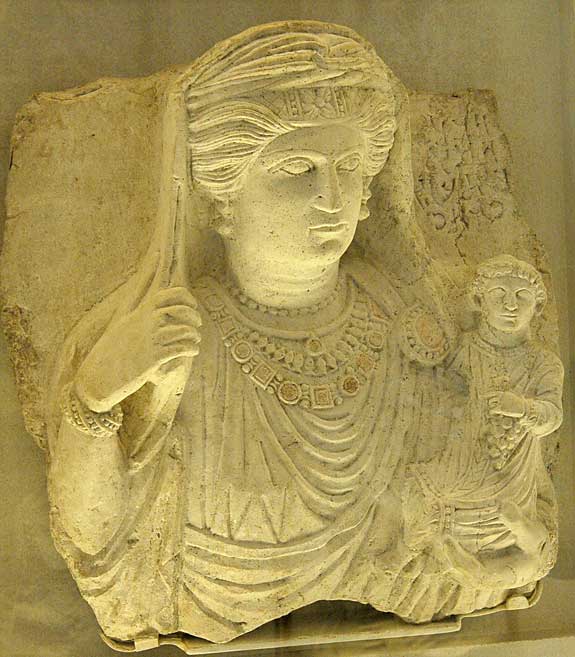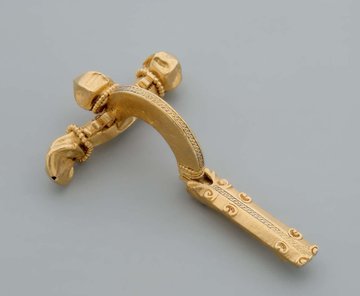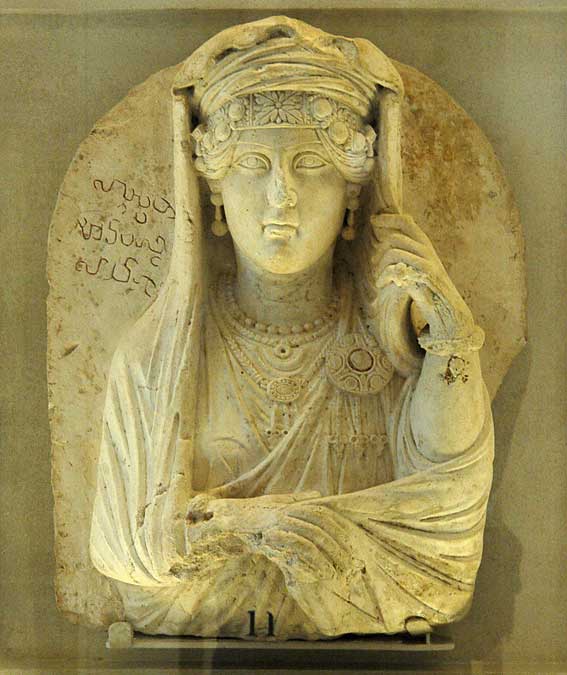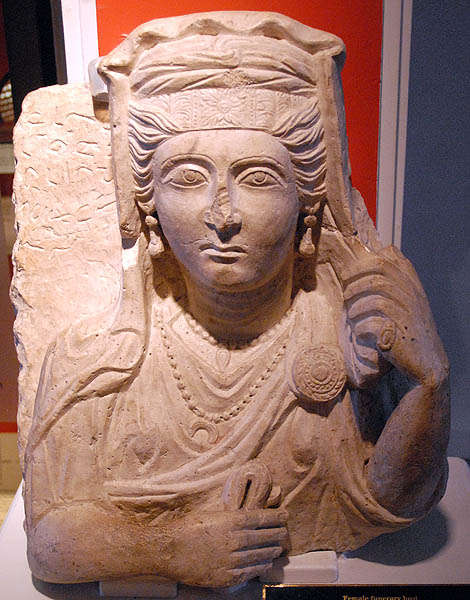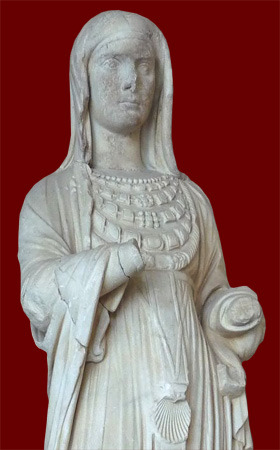Several woman shown on Palmyra reliefs wears multi-string necklaces made of pearls or small beads. They may look like sawn on but more likely these necklaces look like examples from India. What is interesting most of women wearing that kind of necklace have the wide cuffs, all of them wear “crotalia” type earrings and a decorated fillet as a headdress ornament. All reliefs are dated to early 2nd century.
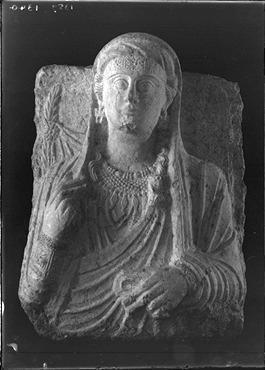
[https://media.hal.science/medihal-00783950]
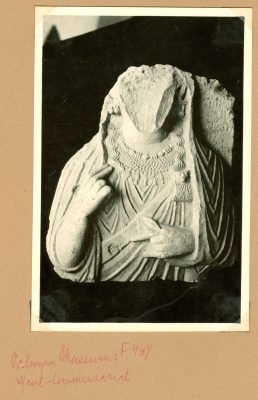
[Raja, Rubina (2021): Ingholt Archive. figshare. Collection. https://doi.org/10.6084/m9.figshare.c.5509725.v1]
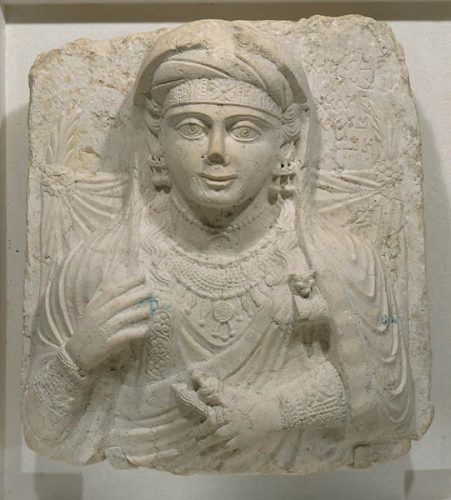
Louvre AO 14925
[Photo © 1999 Musée du Louvre / Christian Larrieu]
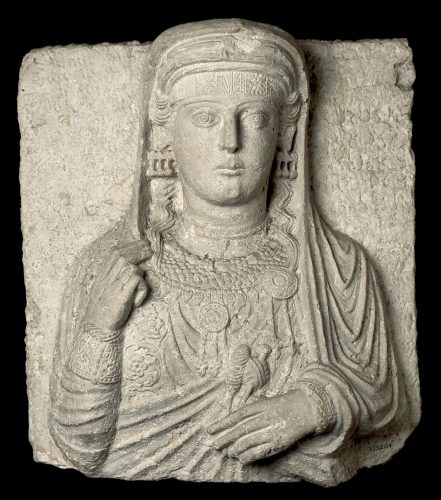
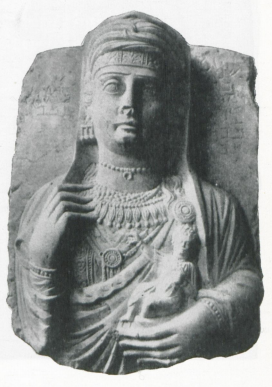
[Die palmyrenische Grabskulptur, Anna Sadurska]
Funerary relief of No’om (?) wife of Haira, son of Maliku; 150 CE.
The Ackland Art Museum of The University of North Carolina
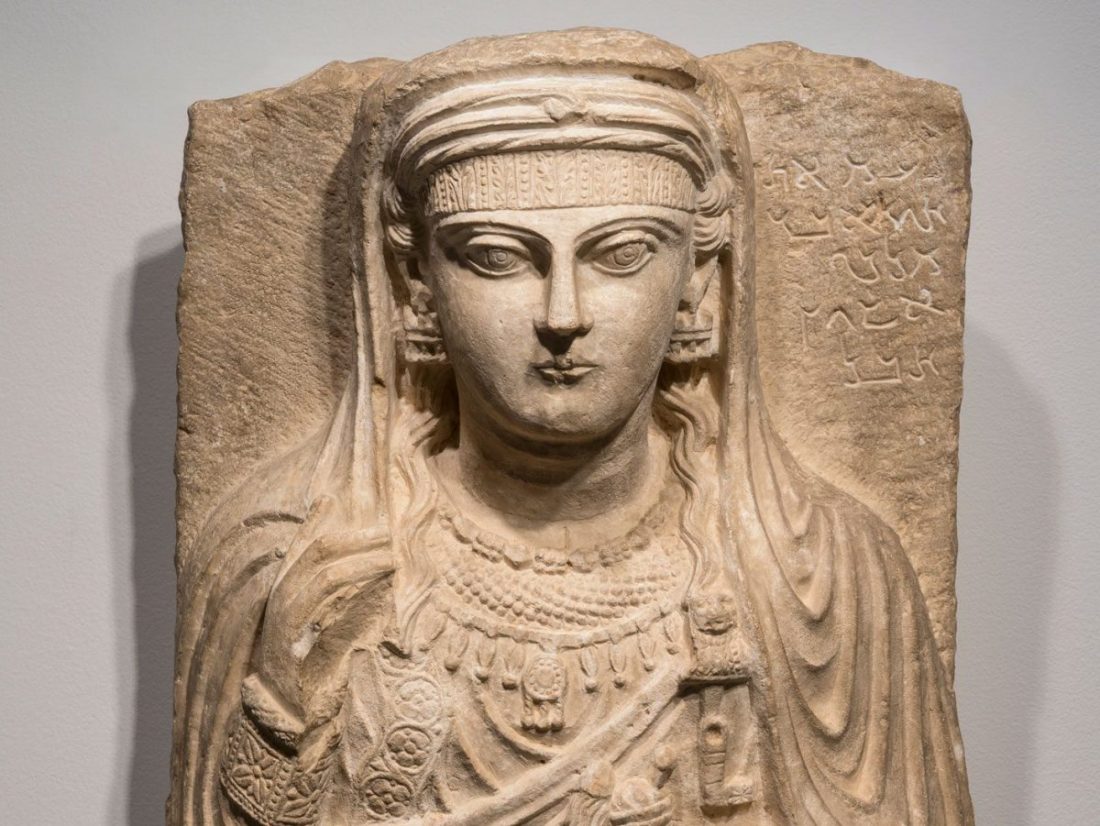

Something to compare – the “Great” and “Beautiful Artemis Ephesia”, 1st-2nd century Roman copies of wooden statues from the Great Temple of Artemis. A similar necklace appears on both sculptures, however Dagmar Aversano-Schreiber in her article “Der Schmuck der Artemis Ephesia” describes it as a wreath of flowers.
At the 5th century sculpture of Vishnu (National Museum Delhi) one can clearly see how the individual strings of beads are arranged. Here the three-dimensional effect is much more pronounced than in the Palmyra reliefs.
The multi-strand necklace motif appears on many of the frescoes from 4th-5th century Ajanta.
It is a colorful illustration to what we can see in Palmyra’s sculptures.




Sources:
– http://www.nationalmuseumindia.gov.in/en/collections/index/7
– https://twitter.com/NMnewdelhi/status/1158666990078189568?s=20
– http://www.edualmanac.com/2019/04/15/into-the-realm-of-exotic-sculptures/
– A. Sadurska, Die palmyrenische Grabskulptur, 1988
– Artemis Ephesia http://www.my-favourite-planet.de/english/middle-east/turkey/selcuk/selcuk-photos-2-01.html
https://www.flickr.com/photos/69716881@N02/44117442905
– Der Schmuck der Artemis Ephesia; Dagmar Aversano-Schreiber

